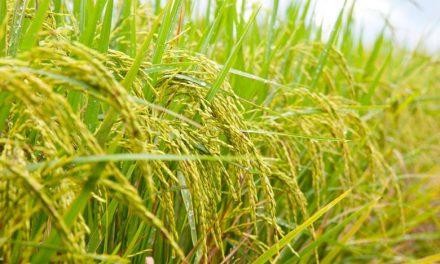In the Bishnupur (Vishnupur) region of West Bengal there exists a group of some of India’s most exquisite temples. These were built under the reign of King Raghunath Singha. One of these, the Keshtaraya Jorbangla temple, built in 1655 A.D., is the focus of today’s article.
This temple is built in typical Bengali brick and entirely covered with terracotta artworks inside and out, depicting Lord Krsna’s lila pastimes. In the Bishnupur Jorbangla temple, filigreed terracotta tiles depict stories of Sri Krsna’s pursuits, along with epic scenes from the Ramayana, Mahabharata, and Puranas. Like most temples in the region, this Jorbangla-type structure is placed against an expansive background and is built on a raised platform. The brick construction style follows that found throughout the eastern part of the subcontinent in Bengal and Bangladesh, and that construction method is an inherent not only to the architecture style, but also to the terracotta artworks.
The brick built temple structures were typically covered with a layer of burnt brick tiles which helped to protect the structure against the humid climate, and kept the interior cool. The tiles were just a few centimeters in size and very slim, and their veneered surface invited the lavish carving and decoration these Bengali temples became famous for.
The terracotta tiles were produced in one of two basic ways. One method was to make segments of a repetitive pattern, while the more complex method was to sculpt tiles with a particular thematic scene. The repetitive pattern designs were first worked out on a wooden mould, which was segmented with designs carved on the surface, in reverse or intaglio. Wet clay was then pressed into the mould, and it took on the impression of the design, which stood out in relief, raised above the background. The tiles were then kiln fired to a beautiful toasted brick red color, then used to assemble the temple’s base, to frame doors and windows, and to create borders along the temple walls.
Expanses of wall space are covered with panels having recurrent flower motifs, lotus petals, and creepers, and intermingled amongst these are special tiles featuring exquisitely detailed pastime scenes. Special techniques were required for these detailed pastime tiles, which were all individually carved. The artists created these narrative panels using various pliable knives to carve out figures on the soft clay tiles.
Surrounded by dense tropical forests, the Bishnupur region had large stands of bamboo, which was used not only for rural house construction, but also for larger temple projects. In addition to the beautiful terracotta work, one of the most pleasing aspects of the Bengali temple architectural style is the sweeping bow-like curve of the roves, which were gracefully arched thanks to the flexible nature of the local bamboo. The curvilinear facades not only created a host of welcoming entranceways into the temples, but provided an excellent line of surface upon which the terracotta tiles were fixed. In fact, the graceful shape of these Bengal temple roofs so impressed the Mughal Emperor Akbar that he reproduced the forms in his palaces, and later emperors continued the tradition in their royal forts. As a result, this architectural style has proliferated across India, and is now found elsewhere around the world where builders took their cue from the sweet terracotta temple of Lord Caitanya’s own West Bengal.
Among the array of stunning Krsna lila narrative panels found in the Keshtaraya Jorbangla Temple in Bishnupur are the Vastraharan scene (stealing the gopi’s clothes), Noukabihar (boating), episodes from childhood Krishna lila including Putana Badh (killing of Putana demon), Gosthalila (Krsna with grazing cows), Krsna playing His flute, Nabanarikunja (nine Gopis forming an elephant), and the Bakasur Badh episode of killing the Baka demon. Each lila narrative is charmingly presented by the sculptors of Bengal’s Jorgbangla temple, and will inspire and delight the devotees for many years to come.












